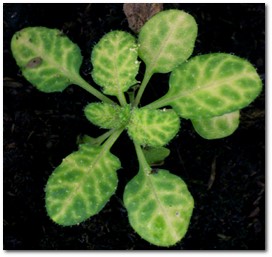Solving mysteries of plant small RNA movement
A publication in Plant Journal by the Voinnet group (IMPB) addresses several outstanding questions pertaining to the cell-to-cell and vascular movement of small interfering (si)RNAs in Arabidopsis.

Plant small RNAs, including siRNAs, have the capacity to move between cells and over long distances via the vasculature. siRNA movement is popularly rationalized by its presumptive systemic immunization function against viruses, which are both triggers and targets of RNA silencing. Viruses move via plasmodesmata (PDs), the channels connecting most plant cells via a cytoplasmic continuum known as “symplasm”. Whether mobile siRNAs also move via the symplasm has been speculated but never experimentally demonstrated. Here, the authors used an inducible callose-deposition system to occlude PDs precisely within the cells that emit artificial siRNAs. They show that PD occlusion suffice to abrogate the ensuing mobile silencing phenotype.
Many endogenous, as opposed to virus-derived siRNAs accumulate in healthy tissues and they, too, have the potential to act non-cell autonomously. Endo-siRNA movement appears selective for some of these molecules, however. Using various systems, the authors uncover the molecular basis for this apparent selectivity. They also provide evidence that certain mobile endo-siRNAs can move toward the shoot including, potentially, into the apical meristem, where they mediate DNA methylation. Due to the absence of methylation reprogramming in plants’ germlines, which derive from meristems, these findings open the prospect that soma-to-germline siRNA communication enables transgenerational epigenetic inheritance.
Link to the paper in external page external page"Plant Journal"